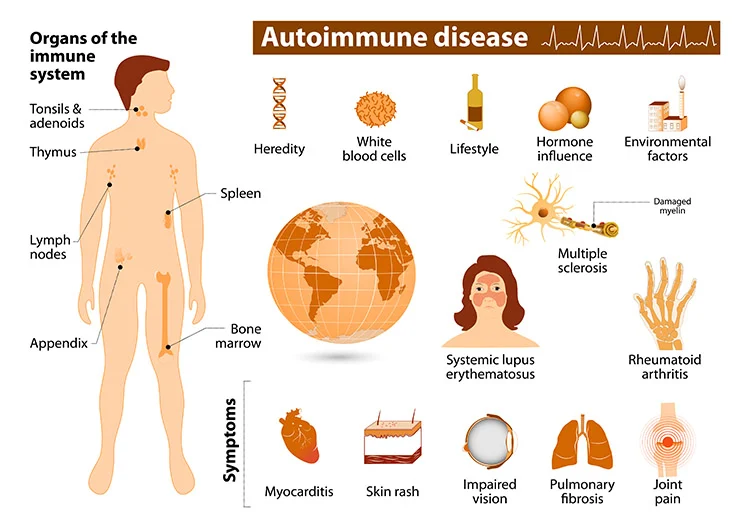 |
| Photo from emedicinehealth.com |
Pancreatic cancer is a disorder in which healthy cells in the pancreas cease to function properly and proliferate uncontrollably. These malignant cells can clump together and form a mass known as a tumor. A malignant tumor is one that can grow and spread to other regions of the body. A pancreatic tumor can disrupt pancreatic function, develop into neighboring blood arteries and organs, and eventually spread to other areas of the body through a process known as metastasis.
The pancreas is a pear-shaped gland positioned between the stomach and the spine in the center of the belly. It is made up of two major parts:
The exocrine component: consists of ducts and small sacs known as acini at the ends of the ducts. This section of the pancreas produces specific proteins known as enzymes, which are released into the small intestine to assist the body in digesting and breaking down food, particularly lipids.
The endocrine component: is made up of cells called islets of Langerhans that are clustered together in various locations within this section of the pancreas. These cells produce a variety of hormones, the most significant of which being insulin. Insulin is a hormone that regulates the quantity of sugar in the blood. Other hormones produced by this region of the pancreas include glucagon, somatostatin, pancreatic polypeptide (PP), and vasoactive intestinal peptide (VIP). Each of these hormones is crucial in controlling the body’s metabolism.
WHAT ARE THE TYPES OF PANCREATIC CANCER?
- Insulinoma
- Glucagonoma
- Gastrinoma
- Somatostatinoma
- VIPomas
- PPomas
WHAT ARE THE SIGNS AND SYMPTOMS OF PANCREATIC CANCER?
- Yellow skin (including the gums and inner lips) and/or eyes, darkening of the urine, itching, and clay-colored stool are all symptoms of jaundice caused by a bile duct obstruction.
- Upper abdominal pain, upper back pain, or arm pain
- Swelling of an arm or leg caused by a blood clot that is painful.
- Burning sensations in the stomach, as well as other gastrointestinal discomforts
- Bloating in the stomach
- Floating stools with a particularly foul odor and an odd hue as a result of the body’s inability to metabolize fats
- Weakness
- Appetite loss
- Vomiting and nausea
- Sweating and chills
- Fever
- Unknown cause of weight loss
WHAT ARE THE STAGES OF PANCREATIC CANCER?
- Resectable (localized): This kind of pancreatic cancer is surgically treatable. Surgery is frequently performed immediately following a diagnosis. Prior to surgery, further treatment may be necessary. The tumor may be only in the pancreas or it may extend beyond it, but it has not grown into any of the area’s major arteries or veins. There is no sign that the tumor has spread to other parts of the body than the pancreas. Approximately 10% to 15% of patients are diagnosed with this stage.
- Locally advanced: This type of pancreatic cancer is still only seen around the pancreas, but it cannot be surgically removed because it has spread into or near surrounding arteries, veins, or organs. This means that surgery cannot be used to remove it since the risk of injuring these nearby structures is too great. There is no evidence that it has spread to other parts of the body. This stage is diagnosed in approximately 35 percent to 40% of patients.
- Borderline resectable: This category represents a tumor that may be difficult or impossible to remove surgically when initially diagnosed, but if chemotherapy and/or radiation therapy may shrink the tumor first, surgery to remove the tumor with negative margins may be possible afterwards. A “negative margin” indicates that no visible cancer cells remain in the body.
- Metastatic: The tumor has spread from the pancreas to other organs such as the liver, lungs, or distant areas of the abdomen. This stage is diagnosed in approximately 45 to 55 percent of individuals.
TNM system of staging
- Tumor(T): What is the size of the main tumor? Where can I find it?
- Node(N): Has the cancer spread to your lymph nodes? If so, where and how many?
- Metastasis(M): Is the cancer in other parts of the body? If so, where and how much?
Tumor (T)
Node (N)
Metastasis (M)
Cancer stage grouping
- A tumor of any size that has spread to four or more regional lymph nodes but has not migrated to neighboring arteries, veins, or other bodily components (T1, T2, or T3, N2, M0).
- A tumor that has migrated to surrounding arteries and veins, as well as possibly to regional lymph nodes. It hasn’t spread to the rest of the body (T4, any N, M0).
HOW IS PANCREATIC CANCER DIAGNOSED?
Pancreatic cancer is diagnosed in the following ways:
- The cancer type suspected
- Your symptoms and signs
- Your age, general health, and family history
- The outcomes of previous medical tests
General tests
- Physical examination: The doctor will check your skin, tongue, and eyes for yellowness, which is an indication of jaundice. Jaundice can be caused by a tumor in the head of the pancreas that prevents the normal flow of bile, which is produced in the liver. However, when pancreatic cancer is detected, many people do not have jaundice. Your doctor will also examine your belly for changes caused by the cancer, however the pancreas, which is positioned in the back of the upper abdomen, is rarely felt. Another indicator of cancer is an abnormal collection of fluid in the abdomen, known as ascites. The doctor will also examine your belly to see if you are experiencing pain in the top area of your abdomen, just behind your breast bone.
- Blood tests: Blood samples may be taken by the doctor to check for abnormal levels of bilirubin and other chemicals. Bilirubin is a substance that can accumulate in high quantities at people with pancreatic cancer due to tumor obstruction of the common bile duct. There are numerous non-cancerous causes of an increased bilirubin level, including hepatitis, gallstones, and a frequent virus known as mononucleosis, or “mono.”
CA19-9 (carbohydrate antigen 19-9) is a tumor marker. A tumor marker is a chemical produced by a tumor that can be detected in the blood and may be found at higher levels if cancer is present. CA19-9 values are frequently elevated in pancreatic cancer patients, however some patients have normal CA19-9 levels. CA19-9 values frequently rise when the cancer progresses or spreads. CA 19-9 should not be used as the sole test to diagnose pancreatic cancer because elevated levels of CA 19-9 can also indicate other illnesses. Other tumors, such as colorectal, liver, and esophageal cancers, can raise CA 19-9 levels. Noncancerous diseases, such as pancreatitis, liver cirrhosis, and a noncancerous obstruction of the common bile duct, may also raise CA 19-9.
Imaging tests
- Computed tomography (CT) scan: A CT scan uses x-rays gathered from various angles to create images of the inside of the body. A computer combines these images to create a detailed multi-dimensional scan image (usually three dimensions or more) that shows any abnormalities or malignancies. A CT scan can be used to detect the size and location of the main tumor, as well as to assess the likelihood of metastasis to lymph nodes or other regions of the body. Typically, a specific dye known as a contrast medium is administered prior to the scan to improve image detail. This dye can be injected into a patient’s vein or given to them in the form of a pill or liquid to consume.
A pancreatic protocol CT scan is a unique CT scan approach used by several cancer clinics. This procedure relies on photographing the pancreas at precise periods following an intravenous (IV) injection of contrast material to determine the exact location of the tumor in relation to surrounding organs and blood arteries. The findings of this test can assist determine whether the tumor can be removed surgically.
ASCO advises persons with metastatic pancreatic cancer to have a CT scan of their chest, abdomen, and pelvis to determine the extent of the malignancy. A CT scan or other imaging may also be performed to monitor therapy success 2 to 3 months after conventional treatment begins.
- Positron emission tomography (PET) scan or PET-CT scan: A PET scan is frequently coupled with a CT scan, resulting in a PET-CT scan. It is sometimes paired with MRI. However, your doctor may refer to this technique simply as a PET scan. A PET scan is a technique for producing multi-colored images of organs and tissues within the body. A tracer, which is a radioactive sugar compound, is delivered into the patient’s bloodstream in small amounts. Fluorodeoxyglucose is the most often used tracer in pancreatic cancer PET studies (FDG). This sugar substance is absorbed by the cells that consume the most energy. Cancer absorbs more of the radioactive tracer chemical because it uses energy actively. The amount of radiation in the material, on the other hand, is purposefully created to be too low to be hazardous. This material is then detected by a PET scanner, which produces images of the inside of the body. The combination provides a more comprehensive picture of the area under consideration. A PET scan should never be utilized in place of a high-quality, fast CT scan. PET scans are distinct from CT scans in that CT scans examine the tumor in respect to your anatomy, whereas PET scans seek to evaluate metabolic activity.
- Endoscopic retrograde cholangiopancreatography (ERCP): A gastroenterologist performs this technique. The doctor will insert a narrow, illuminated tube called an endoscope into the small intestine through the mouth and stomach. The endoscope is then used to guide a tiny tube called a catheter into the bile and pancreatic ducts. Dye is injected into the ducts, and x-rays are taken to determine whether a duct is squeezed or narrowed. During ERCP, a plastic or metal stent can often be inserted across the clogged bile duct to help relieve any jaundice. During this process, tissue samples can be collected, which can sometimes aid confirm a cancer diagnosis. During this operation, the patient is only mildly sedated. ERCP is most typically used to insert bile duct stents and is rarely utilized for diagnosis.
- Ultrasound: An ultrasound creates a picture of the interior organs by using sound waves. Ultrasound devices are classified into two types:
- The doctor places a transabdominal ultrasound instrument on the outside of the belly and slowly moves it around to generate an image of the pancreas and surrounding structures.
- Endoscopic ultrasound (EUS) is a narrow, illuminated tube that is passed through the patient’s mouth, stomach, and small intestine. It is carefully moved around the area to photograph the pancreatic. This treatment is highly specialized and necessitates the services of a gastroenterologist with advanced expertise in this field. A gastroenterologist is a doctor who specializes in the digestive tract, which includes the stomach, intestines, and other comparable organs. EUS is usually performed while the patient is sedated, so he or she sleeps through the operation. A biopsy may also be performed concurrently with this technique.
Biopsy and tissue tests
- Biopsy: A biopsy is the removal of a small sample of tissue for microscopic examination. Other tests can indicate the presence of cancer, but only a biopsy can provide a definitive diagnosis for most malignancies. The material is next examined by a pathologist (s). A pathologist is a medical professional who specializes in interpreting laboratory tests and assessing cells, tissues, and organs to identify disease. In the case of pancreatic cancer, the pathologist may have specific experience examining pancreatic cancer biopsy samples. There are two methods for obtaining a tissue sample:
- Fine needle aspiration (FNA): An FNA suctions out cells using a fine needle introduced into the pancreatic. This is usually done using an EUS or via the skin, which is called percutaneously, and is guided by a CT scan.
- Biopsy with a core needle: This is utilized to obtain a bigger portion of tissue that can be used for biomarker or genetic testing of the tumor. A core biopsy, on the other hand, carries more hazards than a FNA, such as pancreatitis and bleeding. It should be performed by a gastroenterologist who has received special training and has extensive experience with EUS.
If the cancer has progressed to other organs, a biopsy from one of these sites, such as the liver, may be required. Again, this can be done through the skin, as previously mentioned, or by surgery, which is less common. This sort of surgery can be performed via a bigger incision in the belly known as a laparotomy. A laparoscopic method, which uses considerably smaller incisions to provide openings for a tiny camera and surgical instruments, can also be used.
A biopsy may occasionally reveal that there are no cancer cells in the area investigated, even if there are. This is known as a “false negative.” This can happen because the area has inflammation and/or fibrosis (scar-like tissue), which can make it difficult to locate cancer cells. In general, before a patient begins therapy, every effort is done to confirm the presence of cancer, even if this necessitates numerous biopsies. Patients with a tumor in a specific location of the pancreas that can be removed surgically, even if a biopsy is not conducted or the biopsy does not reveal cancer cells, are an exception.
- Molecular, or biomarker, testing of the tumor: Additional molecular tests on the tumor sample may be recommended by your doctor, and you may request them, to discover particular mutations, genetic abnormalities, protein expression, and other molecular traits unique to the tumor. Some of these tests can be performed at the laboratory of your local hospital. Other tests may necessitate sending the material to an independent laboratory for analysis.
Molecular testing should be undertaken to look for evidence of high microsatellite instability (MSI-high) or defective mismatch repair (dMMR); for mutations in the BRCA gene, as well as other genes involved in DNA damage repair; and for an NTRK fusion. These tests may assist doctors in determining your treatment options, which may include immunotherapy and targeted therapy. These results, however, are uncommon in pancreatic cancers. It’s also worth noting that these findings can take weeks to come in, and you don’t have to wait for them before commencing therapy.
Molecular testing is also known as “targeted therapy testing,” “personalized medicine,” “precision medicine,” or “next generation sequencing.” This field of science and treatment is quickly expanding, with increased interest, scientific focus, and research progress. It is beneficial to learn about the type and amount of tumor sample required for these tests, as well as if they are covered by your health insurance. Another biopsy may be required to get a large enough tissue sample for more detailed examination. A blood test, depending on the type of testing, can provide information on some of the molecular or genetic aspects of your cancer.
Discuss with your doctor the possible information that tests like drug assays could provide to help plan your treatment, as well as whether such tests are covered by your insurance.
People who have surgery may also choose to contribute tumor fragments that are no longer needed for their diagnosis or cancer therapy so that the samples can be utilized to advance pancreatic cancer research.
- Germline testing: It is currently advised that all persons with a pancreatic cancer diagnosis undergo germline testing. This entails looking for mutations in a person’s DNA that may suggest a hereditary propensity to cancer in a blood or saliva sample. This is usually done in conjunction with a visit to a genetic counselor. If a person is discovered to be a carrier for specific genetic mutations, this information may assist guide treatment decisions if pancreatic cancer is identified. It would also indicate that their family members should pursue genetic testing and joining a pancreatic cancer family registry.
WHAT ARE THE TREATMENTS OF PANCREATIC CANCER?
How is Pancreatic Cancer Treated?
Surgery
- Laparoscopy: The surgeon may choose to begin with a laparoscopy in some cases. Several small holes are created in the abdomen during a laparoscopy, and a tiny camera is inserted into the body while the patient is sedated. Anesthesia is a drug that helps to inhibit the perception of pain. During this procedure, the surgeon will be able to determine whether the cancer has spread to other sections of the abdomen. If it has, surgery to remove the primary pancreatic tumor is generally not advised.
- Surgery to remove the tumor: Depending on where the tumor is located in the pancreas, several forms of surgery are performed. All of the operations listed below include the removal of adjacent lymph nodes as part of the procedure. In most cases, more than one type of surgeon, as well as other specialists, will be involved in your procedure.
- Whipple procedure: This surgery is also referred to as a pancreaticoduodenectomy. If the cancer is only in the head of the pancreas, a Whipple procedure may be performed. This is a major operation in which the surgeon removes the pancreas head and a section of the small intestine called the duodenum, as well as the bile duct and stomach, or sometimes simply a portion of the stomach. The surgeon next reattaches the digestive tract and biliary system. Temporary drains are typically placed in the belly to aid in drainage and patient recovery. Drains are typically implanted after surgery and kept in place afterward to drain any pancreas juice leakage to the outside of the body. Drains are left in place for varying amounts of time depending on the amount and nature of their output, however they can be removed while still in the hospital and can remain in place for up to 2 to 3 months. This treatment should be performed by a surgeon who has experience treating pancreatic cancer. The Whipple technique is available in numerous forms, including routine, pylorus-preserving, and radical pancreaticoduodenectomy.
- Distal pancreatectomy: This procedure is often performed if the malignancy is found on the left side of the pancreas’ tail. The tail and body of the pancreas, as well as the spleen, are removed during this surgery.
- Total pancreatectomy: If the cancer has spread throughout the pancreas or is found in many locations, a total pancreatectomy may be required. The entire pancreas, a portion of the small intestine, a portion of the stomach, the common bile duct, the gallbladder, and the spleen are removed during a total pancreatectomy.
Radiation therapy
- Traditional radiation therapy: This is also known as standard fraction radiation therapy or conventional fraction radiation therapy. It consists of daily treatments of reduced radiation doses each fraction or day. It is typically administered over the course of 5 to 6 weeks, with weekends off from treatment.
- SBRT (stereotactic body radiation) or cyberknife: These are shorter treatments of greater doses of radiation therapy that can be completed in as little as 5 days. This is a newer type of radiation therapy that can deliver more targeted treatment in fewer sessions. It is unknown whether this strategy performs as well as regular radiation therapy, and it may not be appropriate for everyone. It should only be administered at specialized centers with experience and skill in administering this technology for pancreatic cancer and determining who will benefit the most from it.
- Proton beam therapy: This is an external-beam radiation therapy technique that use protons rather than x-rays. Protons have the ability to destroy cancer cells at high energies. It also reduces the amount of radiation that reaches healthy tissue. Proton beam therapy can be administered for a set period of time or for a shorter period of time, similar to SBRT. It is unknown whether it is more effective than regular radiation therapy, and it may not be suitable for everyone. It should be administered in treatment centers that have the necessary competence and skills to administer this treatment for pancreatic cancer, which may only be offered through a clinical trial.
Chemotherapy
- Capecitabine (Xeloda)
- Fluorouracil (fluorouracil) (5-FU)
- Gemcitabine (Gemzar)
- inotecan (Camptosar)
- Leucovorin (Wellcovorin)
- Nab-paclitaxel (Abraxane)
- Nanoliposomal irinotecan (Onivyde)
- Oxaliplatin (Eloxatin)
- First-line chemotherapy: This is usually the first treatment given to those who have either locally advanced or metastatic pancreatic cancer and have not previously received treatment.
- Second-line chemotherapy: When the first treatment fails or ceases to suppress cancer growth, the cancer is referred to as “refractory.” When first-line treatment fails, this is referred to as primary resistance. Alternatively, medication may be successful for a period of time before ceasing to be effective, a condition known as secondary or acquired resistance. In these cases, if the patient’s overall health is good, he or she may benefit from extra treatment with various medications. There is extensive ongoing research focused on creating novel medicines for second-line, third-line, and beyond treatment. Some of these have shown a lot of potential.
- Off-label use: This is when a medicine is prescribed for a condition that is not stated on the label. This signifies that the drug is not being used to treat the condition(s) for which it has been officially approved by the FDA. It could also imply that the medication is being administered in a manner that differs from the recommendations on the label. As an example, suppose a doctor wants to use a medicine that has only been approved for breast cancer to treat pancreatic cancer. Off-label use of a drug is only advised when there is strong evidence that the drug may be effective for a disease that is not included on the label. This evidence could include previously published studies, promising outcomes from ongoing research, or results from tumor biomarker tests that indicate the medicine may function. Off-label drug use, on the other hand, may not be reimbursed by your health insurance carrier. There may be exceptions, but it is critical that you and/or your health care team consult with your insurance provider before beginning this sort of treatment.
Chemotherapy side effects
Targeted therapy
- Erlotinib (Tarceva): The FDA has approved this medicine in combination with the chemotherapy treatment gemcitabine for persons with advanced pancreatic cancer. Erlotinib inhibits the action of the epidermal growth factor receptor (EGFR), a protein that can become aberrant and aid in the formation and spread of cancer. This medication is taken orally by mouth as a pill, usually once a day. Erlotinib side effects include acne-like skin rash, diarrhea, loss of appetite, and weariness.
- Olaparib (Lynparza): This medication is approved for persons who have advanced pancreatic cancer with a germline (hereditary) BRCA mutation. It is designed for use as maintenance therapy after a patient has completed at least 16 weeks of platinum-based chemotherapy, such as oxaliplatin or cisplatin, with no indication of disease progression. This medication is taken orally by mouth as a pill, usually twice a day. Nausea, vomiting, diarrhea, or constipation, exhaustion, dizziness, lack of appetite, taste changes, low red blood cell counts, low white blood cell counts, gut discomfort, and muscle and joint pain are all common adverse effects of this medication.
- Larotrectinib (Vitrakvi) and entrectinib (Rozlytrek): These are tumor-agnostic drugs that can be used to treat any form of cancer that has a specific genetic alteration known as an NTRK fusion. This type of genetic alteration can be discovered in a variety of tumors, including pancreatic cancer, but it is uncommon. It is approved as a treatment for metastatic or locally advanced pancreatic cancer that has not responded to chemotherapy. This medication is taken orally as a tablet, usually once or twice a day. Dizziness, lethargy, nausea, vomiting, constipation, weight gain, and diarrhea are all common adverse effects.
Immunotherapy
Metastatic pancreatic cancer
- FOLFIRINOX, which is a chemotherapy that combines fluorouracil, leucovorin, irinotecan, and oxaliplatin.
- Gemcitabine in combination with nab-paclitaxel.
- For patients who are not in good enough health to tolerate the more aggressive combinations described above, gemcitabine can be used alone.
- Another gemcitabine- or fluorouracil-based combination, such as gemcitabine plus cisplatin, gemcitabine plus capecitabine, or FOLFOX, may be utilized on occasion.
- Based on the patient’s general health and shared decision-making, fluorouracil alone or in combination with nanoliposomal irinotecan, irinotecan, or oxaliplatin may be advised.
- Gemcitabine may be given alone or in combination with nab-paclitaxel.
- When the cancer has high microsatellite instability (MSI-high) or a mismatch repair defect, pembrolizumab is recommended (dMMR). It is crucial to emphasize that MSI-high illness affects only about 1% of persons with pancreatic cancer.
- Any cancer with an NTRK fusion should be treated with larotrectinib or entrectinib. NTRK fusions are extremely uncommon in pancreatic cancer.
- Patients with a hereditary BRCA1 or BRCA2 mutation who have had first-line platinum-based chemotherapy that has stopped the cancer from growing or spreading for 16 weeks or more may continue treatment with chemotherapy or olaparib, a targeted medication. Maintenance therapy is a treatment that aims to keep the cancer in remission and is an option following a joint decision-making process between the patient and clinician.






